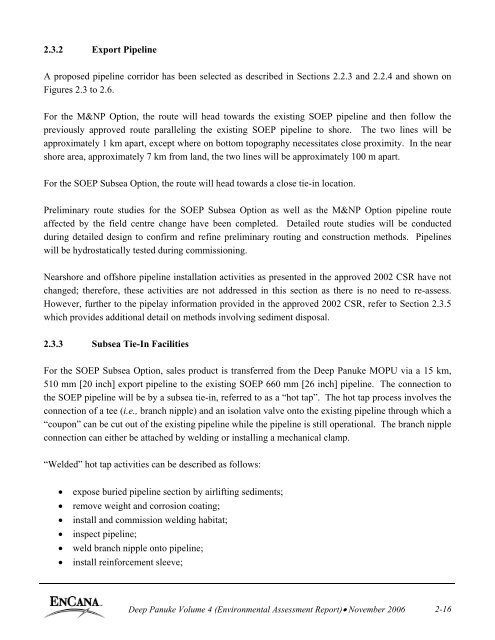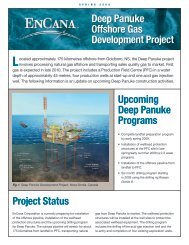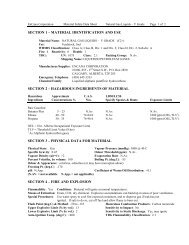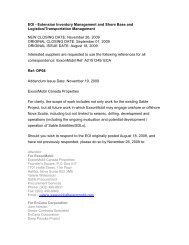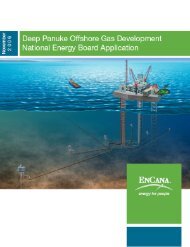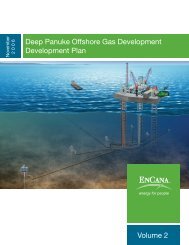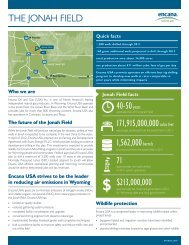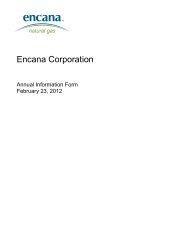Deep Panuke Project Description - Encana
Deep Panuke Project Description - Encana
Deep Panuke Project Description - Encana
You also want an ePaper? Increase the reach of your titles
YUMPU automatically turns print PDFs into web optimized ePapers that Google loves.
2.3.2 Export PipelineA proposed pipeline corridor has been selected as described in Sections 2.2.3 and 2.2.4 and shown onFigures 2.3 to 2.6.For the M&NP Option, the route will head towards the existing SOEP pipeline and then follow thepreviously approved route paralleling the existing SOEP pipeline to shore. The two lines will beapproximately 1 km apart, except where on bottom topography necessitates close proximity. In the nearshore area, approximately 7 km from land, the two lines will be approximately 100 m apart.For the SOEP Subsea Option, the route will head towards a close tie-in location.Preliminary route studies for the SOEP Subsea Option as well as the M&NP Option pipeline routeaffected by the field centre change have been completed. Detailed route studies will be conductedduring detailed design to confirm and refine preliminary routing and construction methods. Pipelineswill be hydrostatically tested during commissioning.Nearshore and offshore pipeline installation activities as presented in the approved 2002 CSR have notchanged; therefore, these activities are not addressed in this section as there is no need to re-assess.However, further to the pipelay information provided in the approved 2002 CSR, refer to Section 2.3.5which provides additional detail on methods involving sediment disposal.2.3.3 Subsea Tie-In FacilitiesFor the SOEP Subsea Option, sales product is transferred from the <strong>Deep</strong> <strong>Panuke</strong> MOPU via a 15 km,510 mm [20 inch] export pipeline to the existing SOEP 660 mm [26 inch] pipeline. The connection tothe SOEP pipeline will be by a subsea tie-in, referred to as a “hot tap”. The hot tap process involves theconnection of a tee (i.e., branch nipple) and an isolation valve onto the existing pipeline through which a“coupon” can be cut out of the existing pipeline while the pipeline is still operational. The branch nippleconnection can either be attached by welding or installing a mechanical clamp.“Welded” hot tap activities can be described as follows:• expose buried pipeline section by airlifting sediments;• remove weight and corrosion coating;• install and commission welding habitat;• inspect pipeline;• weld branch nipple onto pipeline;• install reinforcement sleeve;<strong>Deep</strong> <strong>Panuke</strong> Volume 4 (Environmental Assessment Report)• November 2006 2-16


